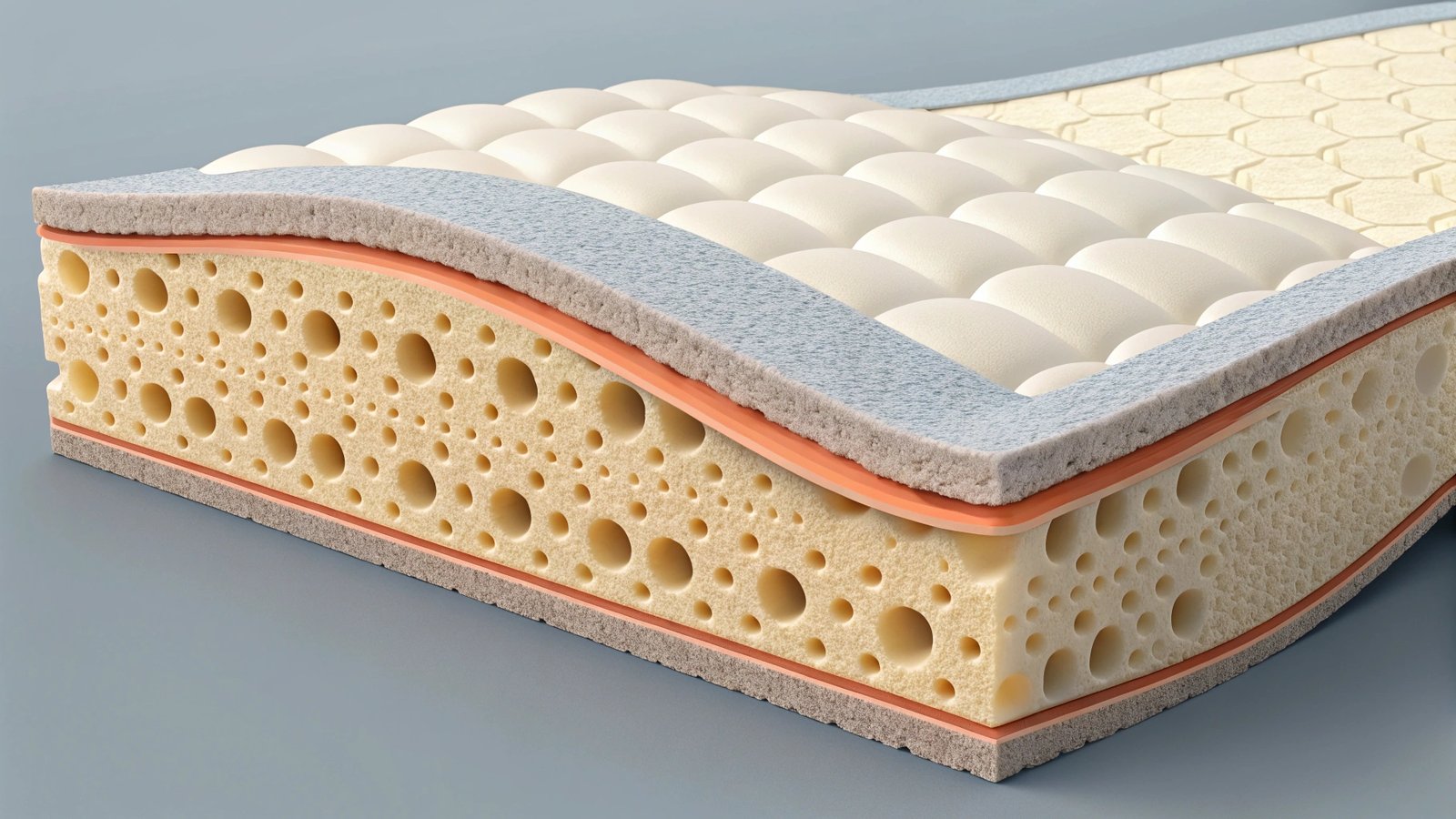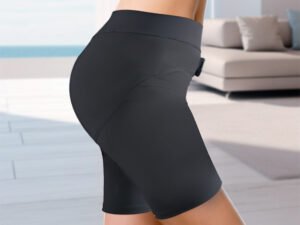If you're looking to purchase or design EMS belts, selecting the right materials is crucial. The wrong choice can lead to durability issues, discomfort, or subpar performance. The good news? With the right insights, you can avoid these pitfalls and make informed decisions.
The best materials for EMS belts strike a balance between durability, comfort, safety, and conductivity. To achieve optimal results, consider the outer shell, inner layers, conductive elements, and padding.
Keep reading to uncover the secrets behind choosing materials that enhance both user experience and product longevity.
Will the outer material stand up to daily use?
Every EMS belt is subject to wear and tear. This makes the choice of outer material critical for ensuring long-lasting use. A poorly chosen outer material can fray, crack, or discolor, undermining the belt's overall quality.
Durable outer materials, like neoprene or nylon blends, are highly resistant to daily stress and environmental factors, ensuring that the belt remains functional and visually appealing over time.
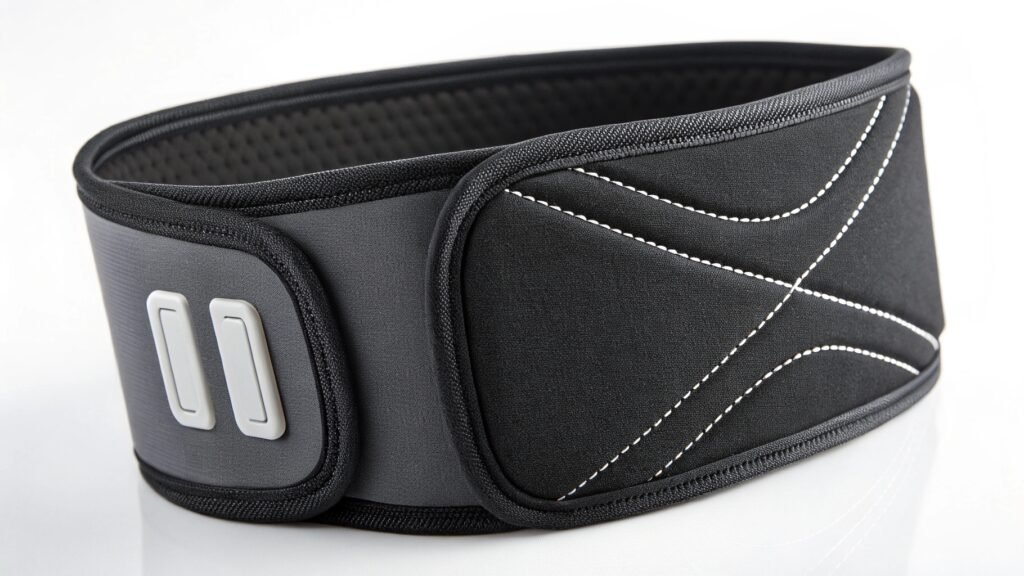
What makes a material durable for EMS belts?
-
Tensile Strength
Durable materials like neoprene and ballistic nylon have high tensile strength[1], making them resistant to stretching or tearing. This is especially useful for belts that require frequent adjustments or high-intensity use. -
Resistance to Environmental Factors
Moisture, sweat, and temperature changes can degrade certain materials. Waterproof coatings or inherently resistant fabrics, like TPU-laminated textiles, help protect the belt from these external stresses. -
Aesthetic Longevity
Outer materials prone to fading or staining detract from the belt's appearance. Materials with color-fast treatments or stain-resistant finishes maintain a professional look even after repeated use.
Common Outer Material Choices
| Material | Durability | Water Resistance | Weight | Cost |
|---|---|---|---|---|
| Neoprene | High | High | Medium | Moderate |
| Ballistic Nylon | High | Medium | Low | Moderate |
| PU Leather | Medium | Low | Low | Low |
These materials meet various needs, balancing affordability with performance. Choosing the right one depends on the belt's intended audience and application.
How can inner materials be both comfortable and safe?
While the outer material determines durability, the inner layer directly interacts with the skin. It must ensure comfort and avoid irritation. After all, nobody wants a belt that feels rough or causes rashes during use.
Hypoallergenic and breathable fabrics, such as cotton blends or perforated synthetic liners, are ideal for maintaining user comfort and safety.
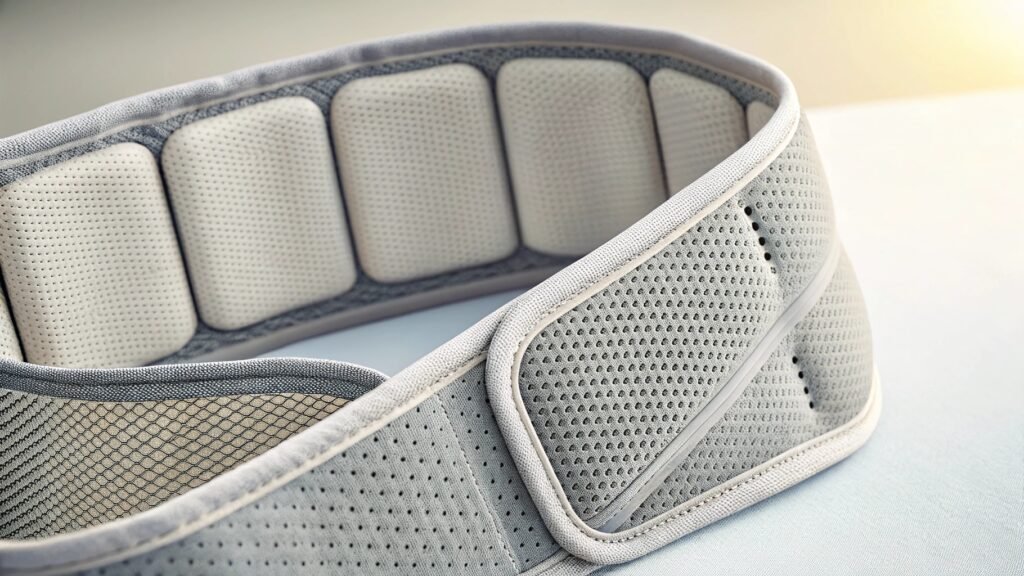
Features to prioritize in inner materials
-
Breathability
Prolonged EMS sessions can make users sweat. Moisture-wicking materials like polyester blends draw sweat away from the skin, reducing discomfort. -
Skin Safety
Allergic reactions or irritation can occur with some synthetic materials. Opt for hypoallergenic options and ensure the material meets international safety certifications like OEKO-TEX Standard 100. -
Ease of Cleaning
Hygiene is crucial. Inner layers made from quick-drying or machine-washable materials simplify maintenance, keeping the belt fresh and safe to use.
Testing for Comfort and Safety
Before committing to a material, test samples for the following:
- Stretchability to accommodate various body types.
- Smoothness to minimize friction on the skin.
- Reaction to extended wear, especially under sweat-inducing conditions.
How does the choice of conductive material affect the EMS effect?
The conductive material [2] is the backbone of any EMS belt. It delivers electrical impulses to the muscles, so its quality directly impacts the device's effectiveness. Poorly chosen conductive elements can lead to uneven stimulation or even discomfort.
High-quality conductive gels, pads, or woven fabrics ensure consistent and effective delivery of electrical impulses, enhancing user satisfaction.
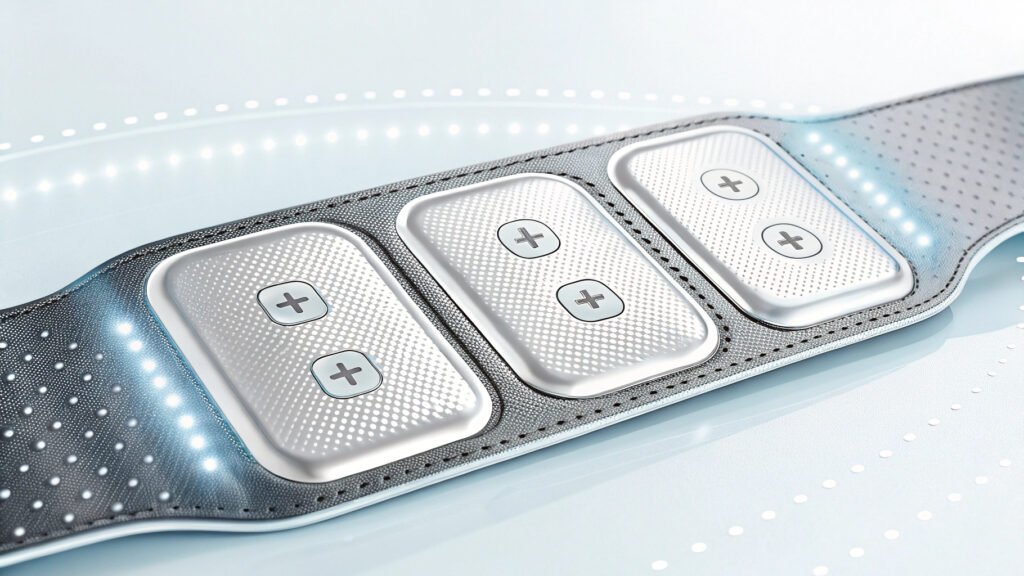
Key considerations for conductive materials
-
Electrical Conductivity
The material must deliver impulses evenly across the contact area. Silver-plated fabrics, for instance, are excellent conductors that maintain a uniform signal. -
Durability under Use
Repeated sessions can degrade conductive components. Materials like carbon rubber are long-lasting, maintaining performance despite frequent use. -
Compatibility with Skincare Products
Conductive materials often interact with gels or lotions applied to the skin. Choose materials that won't corrode or degrade when exposed to these substances.
Popular Conductive Material Options
| Material | Conductivity | Durability | Flexibility | Cost |
|---|---|---|---|---|
| Silver-Plated Fabric | High | Medium | High | High |
| Carbon Rubber | Medium | High | Medium | Moderate |
| Conductive Gels | High | Low | High | Low |
The choice of conductive material depends on the device's intended use. High-end belts often feature advanced silver-based options for maximum efficacy.
How does padding improve the experience of using a belt?
Padding may seem like an afterthought, but it plays a vital role in user comfort. It protects the skin from hard edges, evenly distributes pressure, and enhances the overall feel of the belt.
Well-designed padding made from memory foam or EVA foam significantly improves comfort and encourages regular use.
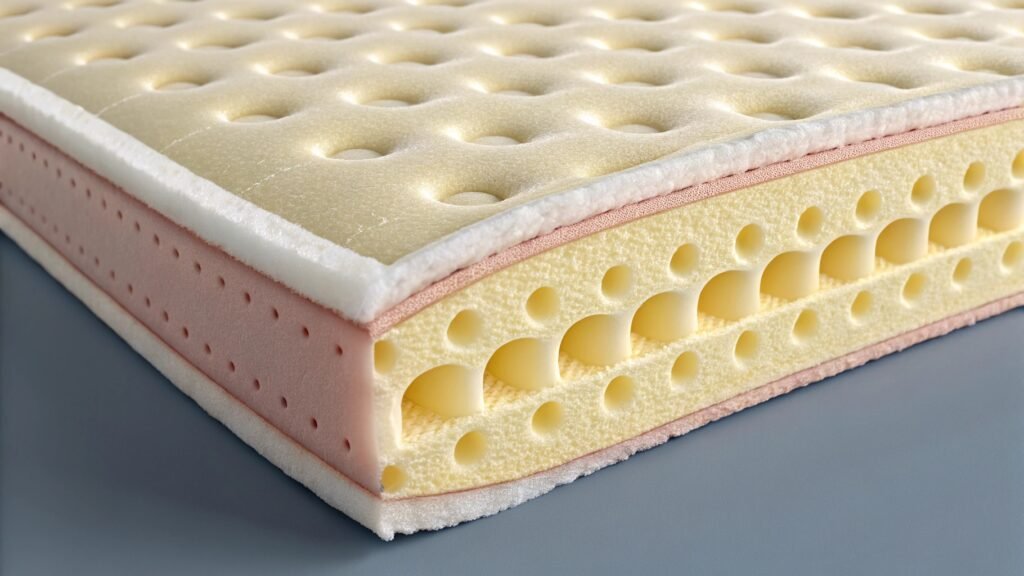
Why is padding essential?
-
Comfort During Long Sessions
A well-padded belt prevents discomfort or soreness during extended wear. Materials like gel-infused foam conform to the body's shape for maximum comfort. -
Pressure Distribution
Uneven pressure can cause localized discomfort. Padding ensures even weight distribution, reducing the risk of irritation. -
Enhanced Performance
By keeping the belt snug and stable, padding helps maintain consistent contact with the skin, improving the effectiveness of EMS sessions.
Comparing Padding Materials
| Material | Comfort | Durability | Cost | Use Case |
|---|---|---|---|---|
| Memory Foam | High | Medium | High | Premium EMS belts |
| EVA Foam | Medium | High | Moderate | Fitness-focused belts |
| Silicone Padding | High | High | High | High-end devices |
When choosing padding, consider the user's needs. Fitness enthusiasts may prefer EVA foam for durability, while casual users might favor the plush feel of memory foam.
Conclusion
Choosing the right materials for EMS belts involves understanding the unique roles of each component. Durable outer layers ensure longevity, while comfortable and safe inner materials enhance user satisfaction. High-quality conductive elements optimize performance, and effective padding provides the finishing touch for a superior experience. By considering these factors, you can create or source EMS belts that stand out in the competitive market.
Footnotes
[1]: Understanding tensile strength helps in selecting materials that resist stretching or tearing, crucial for durable EMS belts.
[2]: The right conductive material ensures consistent and effective delivery of electrical impulses, enhancing the EMS belt's performance.

